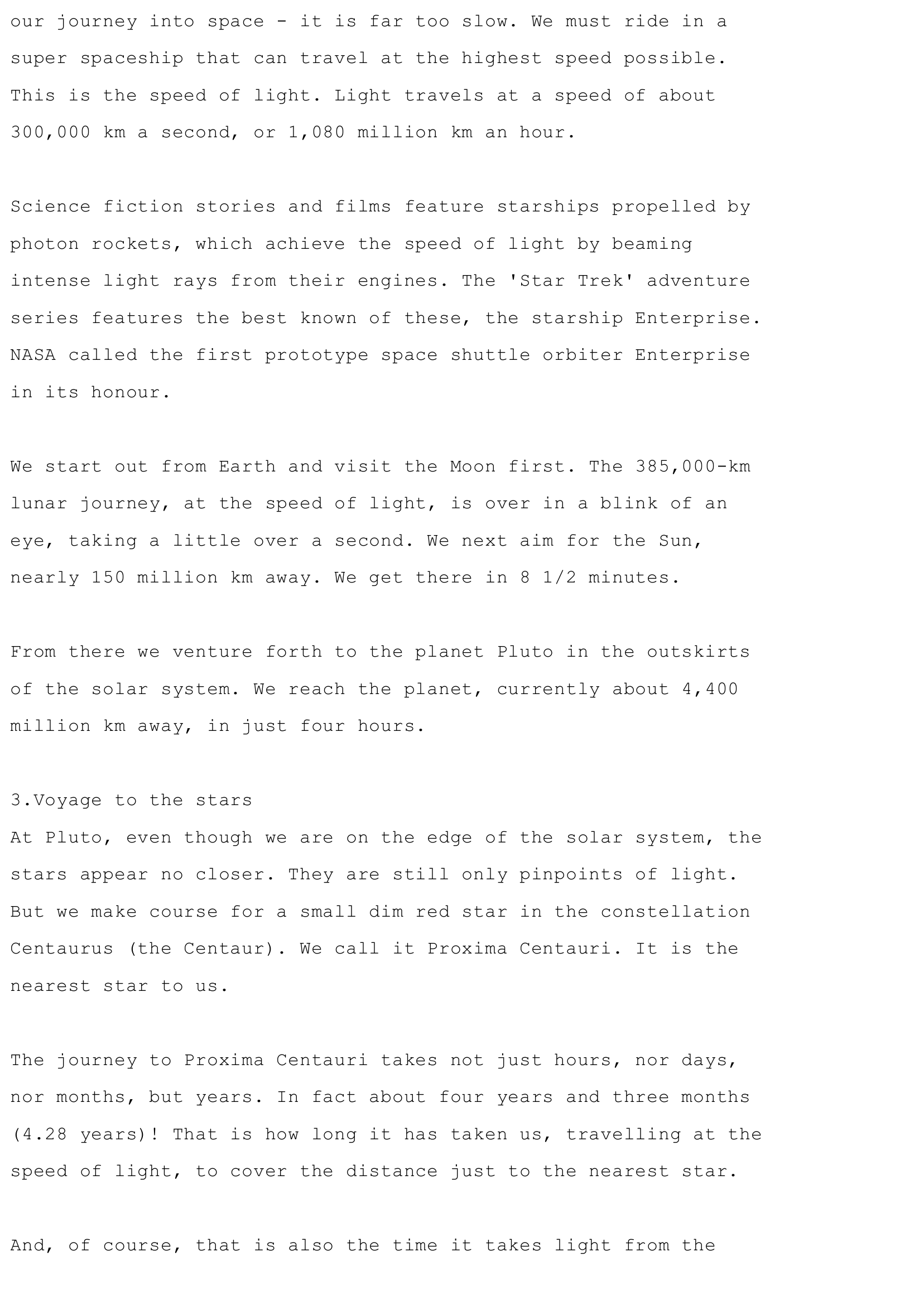THE SCALE OF SPACE
Publié le 17/01/2022

Extrait du document
«
our journey into space - it is far too slow.
We must ride in a
super spaceship that can travel at the highest speed possible.
This is the speed of light.
Light travels at a speed of about
300,000 km a second, or 1,080 million km an hour.
Science fiction stories and films feature starships propelled by
photon rockets, which achieve the speed of light by beaming
intense light rays from their engines.
The 'Star Trek' adventure
series features the best known of these, the starship Enterprise.
NASA called the first prototype space shuttle orbiter Enterprise
in its honour.
We start out from Earth and visit the Moon first.
The 385,000-km
lunar journey, at the speed of light, is over in a blink of an
eye, taking a little over a second.
We next aim for the Sun,
nearly 150 million km away.
We get there in 8 1/2 minutes.
From there we venture forth to the planet Pluto in the outskirts
of the solar system.
We reach the planet, currently about 4,400
million km away, in just four hours.
3.Voyage to the stars
At Pluto, even though we are on the edge of the solar system, the
stars appear no closer.
They are still only pinpoints of light.
But we make course for a small dim red star in the constellation
Centaurus (the Centaur).
We call it Proxima Centauri.
It is the
nearest star to us.
The journey to Proxima Centauri takes not just hours, nor days,
nor months, but years.
In fact about four years and three months
(4.28 years)! That is how long it has taken us, travelling at the
speed of light, to cover the distance just to the nearest star.
And, of course, that is also the time it takes light from the.
»
↓↓↓ APERÇU DU DOCUMENT ↓↓↓
Liens utiles
- SPACE: THE BEGINNING AND THE END
- exposé anglais introduction to the Consumer Society
- Le théâtre a-t-il pour fonction de tout dire, de tout expliquer au spectateur de la crise que vivent les personnages? - Par quels moyens et quelles fonctions Juste la Fin du monde est une pièce qui nous retrace la crise de cette famille?
- Ideology and Rationality in the History of the Life Sciences
- is the cultural difference a barrier between individuals.











